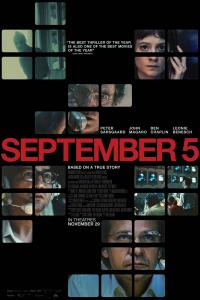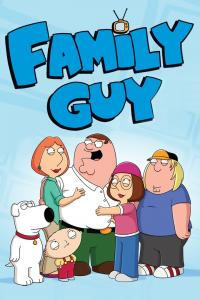| HB11 | ||
|---|---|---|

| CAM (Camera): A cam is a theater rip usually done with a digital video camera. A mini tripod is sometimes used, but often this won't be possible, so the camera may shake. Also seating placement isn't always ideal, and it might be filmed from an angle. If cropped properly, this is hard to tell unless there's text on the screen, but a lot of times these are left with triangular borders on the top and bottom of the screen. Sound is taken from the onboard microphone of the camera, and especially in comedies, laughter can often be heard during the film. Due to these factors picture and sound quality are usually quite poor, but sometimes we're lucky, and the theater will be fairly empty and a fairly clear signal will be heard. TS (Telesync): A telesync has the same specs as a CAM, except it uses an external audio source (most likely an audio jack in the chair for hard of hearing people). A direct audio source does not ensure a good quality audio source, as a lot of background noise can interfere. A lot of the times a telesync is filmed in an empty cinema or from the projection booth with a professional camera, giving a better picture quality. Quality ranges drastically, check the sample before downloading the full release. A high percentage of Telesyncs are CAMs that have been mislabeled. TC (Telecine): A telecine machine copies the film digitally from the reels. Sound and picture should be quite good, but due to the equipment involved and cost telecines are fairly uncommon. Generally the film will be in correct aspect ratio, although 4:3 telecines have existed. TC should not be confused with TimeCode , which is a visible counter on screen throughout the film. SCR (Screener): A pre VHS tape, sent to rental stores, and various other places for promotional use. A screener is supplied on a VHS tape, and is usually in a 4:3 (full screen) a/r, although letterboxed screeners are sometimes found. The main draw back is a "ticker" (a message that scrolls past at the bottom of the screen, with the copyright and anti-copy telephone number). Also, if the tape contains any serial numbers, or any other markings that could lead to the source of the tape, these will have to be blocked, usually with a black mark over the section. This is sometimes only for a few seconds, but unfortunately on some copies this will last for the entire film, and some can be quite big. Depending on the equipment used, screener quality can range from excellent if done from a MASTER copy, to very poor if done on an old VHS recorder thru poor capture equipment on a copied tape. Most screeners are transferred to VCD, but a few attempts at SVCD have occurred, some looking better than others. DVDSCR (DVD Screener): Same premise as a screener, but transferred off a DVD. Usually letterboxed , but without the extras that a DVD retail would contain. The ticker is not usually in the black bars, and will disrupt the viewing. If the ripper has any skill, a DVDscr should be very good. Usually transferred to SVCD or DivX/XviD. WP (Workprint): A workprint is a copy of a film which has not been finished yet. There can be missing scenes, music, and quality can range from excellent to very poor. Some WPs are very different from the final print (Men In Black is missing all the aliens, and has actors in their places) and others can contain extra scenes (Jay and Silent Bob). WP's can be nice additions to the collection once a good quality final has been obtained. Retail DVD: DVD's which are available in shops. PAL / NTSC: PAL and NTSC are two different video standards, the former being European, and the latter being American. PAL has a slightly taller screen (256 lines non-interlaced, non-overscanned) as opposed to NTSC (200 lines), so if you see the bottom portion of a program's screen getting cut off on your American machine, chances are the program was written for PAL, and is running on your shorter NTSC screen. PAL and NTSC differences are somewhat less important to European users; since their machines default to PAL, running an NTSC program is no more than a minor annoyance having the screen only appear in the top portion of the display. Other important tags for movies / dvd's: COMPLETE: A release is COMPLETE when it's a DVD5. When a dvd is COMPLETE, it didn't need any adjustments and the video is therefore untouched. Most dvd's though are DVD9, so they need to be compressed to DVD5. DVD5 is much more wanted since all dvd players can read these dvd's, and almost every dvd burner can burn them. DVD9 discs are less popular, they are more expensive and not many people can burn a DVD9. LiMiTED: A movie is LiMiTED when it has a limited theater run. Generally smaller films (such as art house films) are released as limited. The scene considers a movie limited when it has a generally opening in less than 300 UK theaters, or in less than 500 USA theaters. In the scene jargon, it's usually called 300 UK screens, or 500 USA screens. Officially, it's not the opening weekend's number of theaters that counts, but the peak of the number of theaters. For example; when a movie has 275 UK screens in the opening weekend, and 1 week later it has 325 screens, it's not limited. STV: STV stands for Straight To Video. These movies were never released in theaters, instead, they were immediately released on video/dvd. Therefore, a lot of sites do not allow these movies. FESTiVAL: This is a variation of STV/LiMiTED. A FESTiVAL is a movie which hasn't been shown in a public theater, but does has been shown on a filmfestival (such as Cannes Film Festival). An example of a FESTiVAL movie is Hot Tamale (imdb), which has not been in a public theater, but it was shown on the Newport Beach Film Festival. iNTERNAL: An internal release is done for several reasons. The most common reason is because it has already been released before, and with iNTERNAL in title, the release won't be nuked. iNTERNAL's are quite common. Also lower quality theater rips are done iNTERNAL so it doesn't lower the reputation of the group. An iNTERNAL release is available as normal on the groups affiliate sites, but they can't be traded to other sites without request from the site ops. Although a release is iNTERNAL, it still can be very popular. For mp3's the interla-tag is different. For mp3 releases it's releasetitle-year-Group_iNT. That way the internal release won't be calculated into the group's stats. This avoids mp3 groups from doing a lot of internal releases, since they would just do that to get better stats. Some groups rename iNTERNAL to iNT, since this much shorter. Subbed: If a release is subbed, it usually means it has hard encoded subtitles burned throughout the movie. These are generally in malaysian/chinese/thai etc, and sometimes there are two different languages, which can take up quite a large amount of the screen. SVCD and DVD support switchable subtitles, so some DVDRips and most DVD's are released with switchable subs. Unsubbed: When a movie has been release subbed before, an unsubbed release may be released. Custom.Subbed: A release can also be custom subbed. Movies often are released earlier in the USA than in Europe. These movies mostly contain a few subtitles, the ones that are spoken in the USA. European groups can create custom subtitles and add these to the dvd(rip). For example, when Dutch subtitles were added to a NTSC DVDr: Madagascar.2005.Custom.NL.Subbed.NTSC.DVDr-Group. Off course, it's not just European, also Japaneese movies can be subbed english for example. Dubbed: If a film is dubbed, it is a special version where the actors' voices are in another language. Dubbed versions of English-language films are for people who don't understand English very well. In some countries, dubbing is very common, for example Germany. SE: SE stands for Special Edition. Like the name says, it's a special dvd edition of a movie. Often special editions contain extra material like deleted scenes, interviews, or a making-of. DC: DC stands for Director's Cut. A director's cut is a specially edited version of a movie that is supposed to represent the director's own approved edit of the movie. It is often released some time after the original release of the film, where the original release was released in a version different from the director's approved edit. 'Cut' is synonymous with 'edit' in this context. DL: DL stands for Dual-Language, meaning the dvd contains more than one language. Synonym: ML. FS / WS (Aspect Ratio Tags): These are FS for FullScreen and WS for WideScreen (letterbox). Language Codes: The language of the movie and the language of the subtitles can also be mentioned in the release name. Sometimes the language is fully mentioned in the release name, such as DUTCH, NORDiC, GERMAN and iTALiAN. Sometimes it's shortened, then the ISO standard country abbreviations are used. These are the same as the abbreviations which are used for www-domains, for example: NL (Dutch), NO (Nordic), DE (Germany), IT (Italian). When there are multiple languages or subtitles, MULTi or MULTiSUBS is mentioned. In general, when the language is fully mentioned in the releasename, this is the movie language. The abbrivation usually means the subtitle(s). So DUTCH will mean that the language is Dutch, and NL will mean that the menu/subtitle is Dutch. Extended: Sometimes movies are released again on DVD because now the movie is extended. They have put back deleted scenes. For example, E.T. was produced first in 1982 and years later it was brought on DVD again, but now digitally remastered and extended. Digitally Remastered: Digitally remastered means that an older not-digital movie has been re-editted, remastered and is released on DVD. Some really old movies look very bad compared to the new digital movies. Then they remaster it to make it look better, edit & recolor the video, etcetera. Remastering generally implies some sort of upgrade to a previous existing product, frequently designed to encourage people to buy a new version of something they already own. Rated/Unrated: Rated means a movie is censored, unrated logically means uncensored. Recode: A recode is a previously released version of a movie, usually filtered through TMPGenc to remove subtitles, fix color etc. Whilst they can look better, its not looked upon highly as groups are expected to obtain their own sources. R1, R2, R3, R4, R5, R6 (Region Code): A dvd is released in a certain geographical area, or region and it's not viewable on a dvd player outside of that region. This was designed to stop people buying American dvd's and watching them earlier in other countries, or for older films where world distribution is handled by different companies. A lot of players can either be hacked with a chip, or via a remote to disable this. The regions are: Region 1 - U.S., Canada, U.S. Territories Region 2 - Japan, Europe, South Africa, and Middle East (including Egypt) Region 3 - Southeast Asia and East Asia (including Hong Kong) Region 4 - Australia, New Zealand, Pacific Islands, Central America, Mexico, South America, and the Caribbean Region 5 - Eastern Europe (Former Soviet Union), Indian subcontinent, Africa, North Korea, and Mongolia Region 6 - Peoples Republic of China More General Important Tags: PROPER: Due to scene rules, whoever releases a certain release the first, has won that race. For example, when a group releases the CAM version of Titanic the first. If there is something "wrong" with the release (poor quality, out-of-sync, audio errors etc.) and another group has a better/correct version, it can release it and add PROPER to the release title to avoid being nuked. However, the source must be the same as the original release. For example: A poor quality CAM release by group A and group B releases their CAM release PROPER. A Telesync release doesn't PROPER a CAM release, because the source is different. PROPER is the most subjective tag in the scene, and a lot of people will generally argue whether the PROPER is better than the original release. The reason for the PROPER should always be mentioned in the NFO. REPACK: If a group releases a bad rip, they can release a Repack. A Repack is a fixed version of the original release. It's similar to PROPER but then done by the same group. Note that a Repack is different from a fix. A Fix will repair the original release whilst a repack is a new release. Rerip: A previous rip was bad, now it's ripped again properly. Similar to repack. READNFO: When something important is mentioned in the NFO or as a replacement for PROPER, READNFO can be added to the releasetitle. Now some tags just for movies/tv rips: Sources: DVDrip: A rip of the final released DVD. If possible this is released pre retail (for example, Star Wars episode 2). The quality of DVDrips is very good. DVDrips are released in SVCD and DivX/XviD. VHSRip: Transferred off a retail VHS, mainly skating/sports videos and XXX releases. TVRip: TV episode that is either capped from Network (capped using digital cable/satellite boxes are preferable) or PRE-AIR from satellite feeds sending the program around to networks a few days earlier (do not contain "dogs" but sometimes have flickers etc). PDTV is capped from a digital TV PCI card, generally giving the best results. VCD/SVCD/DivX/XviD rips are all supported by the TV scene. Formats: VCD (VideoCD): VCD is a mpeg1 based format, with a constant bitrate of 1150kbit at a resolution of 352x240 (NTSC). VCDs are generally used for lower quality transfers (CAM/TS/TC/Screener(VHS)/TVrip(analogue) in order to make smaller file sizes, and fit as much on a single disc as possible. Both VCDs and SVCDs are timed in minutes, rather than MB, so when looking at an mpeg, it may appear larger than the disc capacity, and in reality you can fit 74min on a CDR74. SCVD (SuperVideoCD): SVCD is a mpeg2 based (same as DVD) video format which allows variable bitrates up to 2500kbits at a resolution of 480x480 (NTSC) which is then decompressed into a 4:3 aspect ratio when played back. Due to the variable bitrate, the length you can fit on a single CDR is not fixed, but generally between 35-60 Mins are the most common. To get a better SVCD encode using variable bitrates, it is important to use multiple "passes". this takes a lot longer, but the results are far clearer. XVCD/XSVCD: These are basically VCD/SVCD that don't obey the "rules". They are both capable of much higher resolutions and bit-rates, but it all depends on the player to whether the disc can be played. X(S)VCD are total non-standards, and are usually for home-ripping by people who don't intend to release them. XViD/DivX (Digital Video Express): DivX is a format designed for multimedia platforms. It uses two codecs, one low motion, one high motion. Most older films were encoded in low motion only, and they have problems with high motion too. A method known as SBC (Smart Bit-rate Control) was developed which switches codecs at the encoding stage, making a much better print. The format is anamorphic and the bitrate/resolution are interchangeable. The majority of proper DivX rips (not Re-Encs) are taken from DVDs, and generally up to 2hours in good quality is possible per disc. Various codecs exist, most popular at the moment is XviD. The formal most popular codec was DivX. CVD: CVD is a combination of VCD and SVCD formats, and is generally supported by a majority of DVD players. It supports MPEG2 bit-rates of SVCD, but uses a resolution of 352x480(ntsc) as the horizontal resolution is generally less important. Currently no groups release in CVD. Additional source info for TV Rips: HDTV (High Definition Televison): Digital recording from a source stream at either 1080i or 720p at a bitrate from 19,39mbps or higher. PDTV (Pure Digital Television): Other resolution digital recordings from source streams at a bitrate of 10 mbps or higher. It is a label given to files that were ripped directly from a purely digital source, having less resolution than HDTV. This is accomplished by using a TV tuner card capable of receiving Digital Video Broadcasts or C-Band. SDTV (Standard Digital Television): Digital recording or capture from a source stream at any resolution with bitrate under 10mbps.This includes DirecTiVo but also captures from digisat or digicable with analog capture cards. TVRip (Analoge TV Rip): Recorded from analog TV, lowest quality of all TV rips. More TV info: Season/Episode code: A code which shows the season and episode of a tv show. For example: S01E12 is season 1 episode number 12. DVB (Digital Video Broadcast): The standard for direct broadcast television in Europe and the US Based on MPEG2 Compression. DSR (Digital Satellite Rip): Recorded from Digital Satellite, quality is similar to PDTV. PPV (Pay Per View television): Pay television programming for which viewers pay a separate fee for each program ordered. Hope its helpful. | |
Like 11 | ||
| Post liked by - costaalfed | ||
| bombegranate | ||
|---|---|---|

| Awesome! This is what i was waiting for! Those different movie types have always been so confusing to me! Thanks for shedding a light on this! | |
Like 2 | ||
| Post liked by - panosol | ||
| Fastclaw | ||
|---|---|---|

| No MKV or MP4 Format?? | |
Like 2 | ||
| Post liked by - panosol | ||
| Mafketel | ||
|---|---|---|

| Lol In the other 2 threads they are missing as well. As is AVI. | |
Like 3 | ||
| Post liked by - panosol | ||
| Prom3th3uS | ||
|---|---|---|

|
Well all these threads mostly cover ''Pirated Movie Release Types'' ''Tags types in torrent title'' But they are not media container format or file format, AVI, MKV, MP4, these are media container format to store a complete movie in a single file. Example: you could have a MKV file that contains H.264 video and something like MP3 or AAC for audio. Let me cover this: AVI (File format): Audio Video Interleave, known by its initials AVI, is a multimedia container format introduced by Microsoft in November 1992 as part of its Video for Windows software. MKV (Container format): MKV stands for "Matroska Video". Matroska is a container file format, in which there can be many audio, video and subtitles streams, allowing the user to store a complete movie in a single file. Matroska is usually found as .MKV files (matroska video), .MKA files (matroska audio) and .MKS files (subtitles) and .MK3D files (stereoscopic/3D video). Contrary to popular belief, MKV files are not an audio or video compression format. MKV files are actually multimedia container formats. An MKV container can incorporate audio, video, and subtitles into a single file—even if those elements use different types of encoding. MKV container files were designed to be future proof, meaning that the files would not become outdated. MP4 (Container format): MP4, or MPEG-4 Part 14, is a media container format, storing video, audio, subtitles and images, normally in .mp4 file extension. To make it more clear: e.g. MP4 container (.mp4) = MP4 format video (H.264 codec) + audio + subtitle MP4 is a file format created by the Moving Picture Experts Group (MPEG) as a multimedia container format designed to store audiovisual data. The MP4 is largely replacing earlier multimedia file formats, and creating some changes in the way that vendors sell audiovisual files to the public. Lastly In this thread a word format is wrong, i mean title shouldn't have format word in it because these are not file formats, these are same above and similar tags types for torrent titles, that contains in other recent threads. Correct title > Movie Types / Btw nice thread HB11 | |
Like 7 | ||
| Post liked by - Kristian, Dronska | ||
| ellobo | ||
|---|---|---|

| Hi there, it might not be the proper thread but here I go. I downloaded a bunch of movies showing AVI extension. VLC does play them, so I select Windows Media, which gives me this error: Windows Media Player cannot play the file. The Player might not support the file type or might not support the codec that was used to compress the file. And what to do what to do whoo whoo? | |
Like 0 | ||
| Prom3th3uS | ||
|---|---|---|

| #1 - The file type is supported by the Player, but the file was compressed by using a codec that is not supported by the Player. #2 - The file might have been encoded by using a codec that is not supported by Windows Media Player. If this is the case, Windows Media Player cannot play the file. - You can check the codec by right click and file properties. Easy solution: Install, K-lite Codec pack, It will install missing codecs plus required codecs that play videos. It probably solves this, after that, you can also check a proper MediaInfo of a file to check codec and extensions. Other than that, Since very long terms this error has been discussed on different platforms including Microsoft. and here are the given suggestions by Microsoft teaches. Suggestions: 1.a) Try playing the file on a different computer and check if the file is not corrupt. 1.b) Try copying the file to the computer and check if you are able to play the file. 2. In some cases people have run into this error when the wrong audio device is selected in WMP. Tools | Options | Devices | Speakers | Properties will allow you to change it. 3. It’s a good idea to update and/or reinstall your Sound Card and Video Card drivers. Along with DirectX when you are getting this error. 4. To determine what codec was used with a specific file, play the file in the Player, if possible. While the file is playing, right-click the file in the library, and then click Properties. On the File tab, look at the Audio codec and Video codec sections. 5. Download and install Codecs by go to the PLAYER tab and check. Connect to the Internet and Download Codecs Automatically from the player 6. Configure protocol settings On the Tools menu, click Options, and then click the Network tab. In the Streaming protocols area, select all the protocol check boxes. When connecting to a server running Windows Media Services, Windows Media Player attempts to use all the selected protocols. Good luck buddy! :) | |
Like 3 | ||
| Post liked by - Kristian, ellobo | ||
| ellobo | ||
|---|---|---|

| mouaaaaaaaaaaaaaa lol :-( | |
Like 1 | ||
| Post liked by - Prom3th3uS | ||
| sjappiesjappiePosted at 2023-06-02 14:53:18(89Wks ago) Report Permalink URL | ||
|---|---|---|
| Is there a big difference between a 14gb UHD Bluray movie and a 77gb Remux Bluray? Is this good to see on for example a 77" tv? | |
Like 0 | ||
| soulmiesterPosted at 2024-05-18 11:06:25(39Wks ago) Report Permalink URL | ||
|---|---|---|
| I hope this is in the right section. I know this maybe a daft question but is there a way to sort and filter AR? what i mean is versions that are standard 16:9 (or 1.78:1) and cinemascope' which is 2.35:1 etc? i have an old tv which really struggles sometimes on the 16.9 AR, its a big old 55" but the 16.9 only uses about 2 thirds of the screen whereas the 2.35:1 AR movies use pretty much the whole screen. Maybe a dumb qusetion and may not make sence to some but hey, thats what forums are for. Kindest Regards | |
Like 2 | ||
| Post liked by - B4ND1T69 | ||
| Mafketel | ||
|---|---|---|

| There's no possibility to create a search frase to filter out 2.35:1 Best to check the MediaInfo if provided in the description so see what screen ratio is used. Last edited by Mafketel on 2024-05-18 14:30:55 | |
Like 6 | ||
| Post liked by - Kristian, ROBBREDD | ||
| B4ND1T69 | ||
|---|---|---|

| What are you using to play movies etc on your big old 55"...? Use the settings on the player to "size to fit" the image...? VLC will do it for you...(click on "A" when in use"...? Sometimes even when the aspect is what you want....the encoder may have also added black bars to force the ratio...which may make images appear even smaller  | |
Like 4 | ||
| Post liked by - ROBBREDD | ||










































